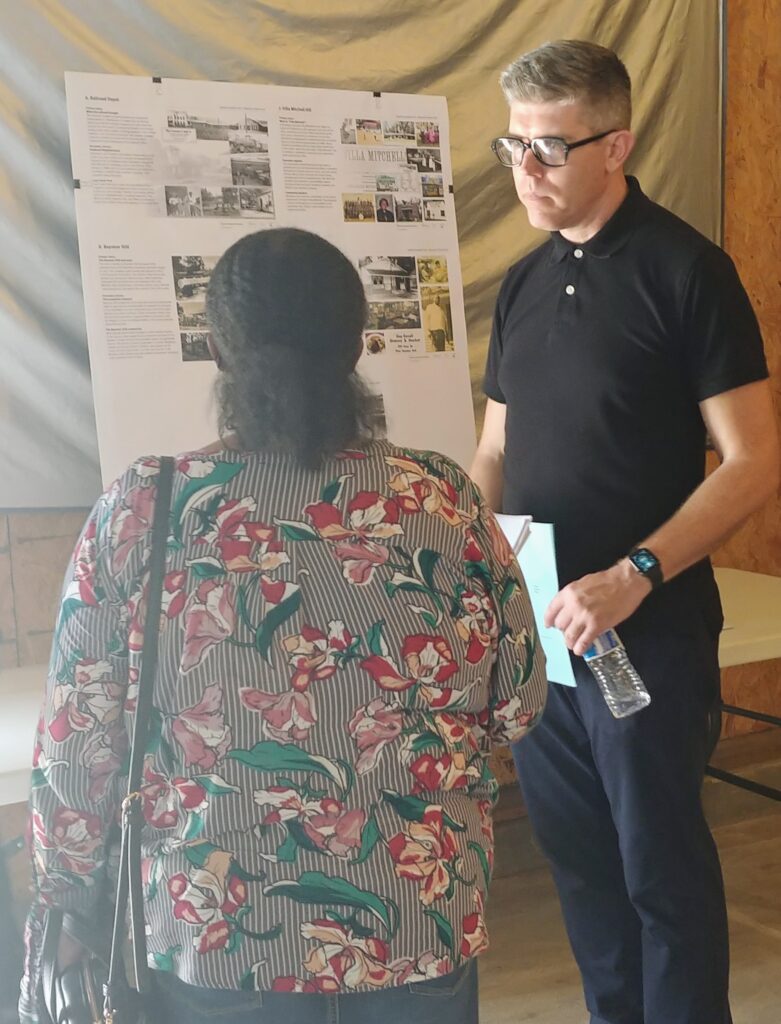
Finishing touches for FAMU Way to include Black history and culture

Photo by St. Clair Murraine

By St. Clair Murraine
Outlook staff writer
There’s a story about the building where Shingles Chicken Shack was located in the Boynton Stills neighborhood once being a gathering place for teens and doubled as a dancehall.
Historic lore like that has been coming to light as Blueprint work to gather all it can about communities near the road that was once known as Canal Street.
Within about two years, a walk on FAMU Way would be very revealing about what life was like along the stretch of roadway that runs from South Adams Street to Lake Bradford.
The plans have been in motion since 2014 when FAMU’s history department was commissioned by Blueprint to conduct a survey about the area’s history. A lot of the findings and stories told by people who lived during the years when self-contained communities were scattered in surrounding areas.
Two meetings, one virtually and another last Saturday in Railroad Square, were held to give insight on the plans for setting up kiosks that will tell the stories. Blueprints wants to hear more so that it could give the most accurate account, said Tatiana Daguillard, a historian and project manager with Blueprint.
They want to hear about Allen Subdivision, Villa Mitchell, Boynton Stills and Shingles Chicken Shack, the Alberta Crate and Box Company and anything in between that relates to the history and culture. The stories will be told in 10 stations along the roadway.
“What we’re going to have is an immersive interactive outdoor museum experience,” Daguillard said. “This is going to be a look and feel, look and hear, look and see experience. Every station will be tailored to the history. Holistically these stations will all fold into telling the African American story and cultural impact of people, businesses in this area.”
Two years after initiating the FAMU history survey, Blueprint developed a citizen working group to begin capturing the “essence of the communities.” Althemese Barnes, who recently retired as director of the historic Riley House, is a part of that group.
The stories that the working group told were passed on to the planners to draw up the concept based on what they heard and saw in photos. They got more revelations, especially the stories about the people during the two meetings last week.
“I think having the human element is a really important part of a commemoration of history,” said Autumn Calder, director of Blueprint Intergovernmental Agency. “It’s that human element that brings the uniqueness to a place that draws people to it.”
According to a synopsis of what will be included along the history and culture trail, the first three stations will focus on the Allen Subdivision; a section focuses solely on FAMU’s history with former professor Charles U Smith as the focal point and about FAMU and locals who contributed to the civil rights movement.
Apart from the kiosks, which will have photos and literature, plans for adding audio are still in the work. A question from Shauna Smith, a member of the working group, about the availability of Wi-Fi raised concern about using QR codes to tap into the information.
However, Shawn Kalbli of Blue Print said that’s an issue still to be worked out with the city.
One of the aching questions that presenters heard was about the removal of some buildings of significance in the area. The demolition of Shingles was at the top of the list.
The question didn’t surprise Barnes, who said she’s heard the same thing about Smokey Hallow, a Black community that was located just east of Cascades Park. But projects like the one planned along FAMU way will help to do what she calls “knitting the community.”
“I think it’s important for the survival of the ways, for the pride, for people and who they are to know and understand where they came from,” Barnes said.
She added that having the history and culture trail on FAMU way is inspiring.
“What we can do is tell the story,” she said, “tell the important things that our people did for this community and spread it everywhere.”







